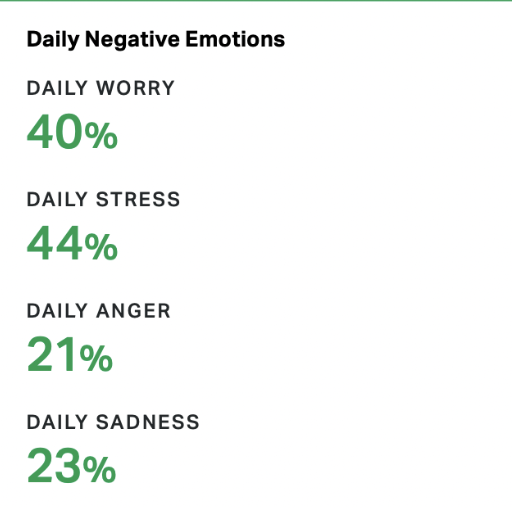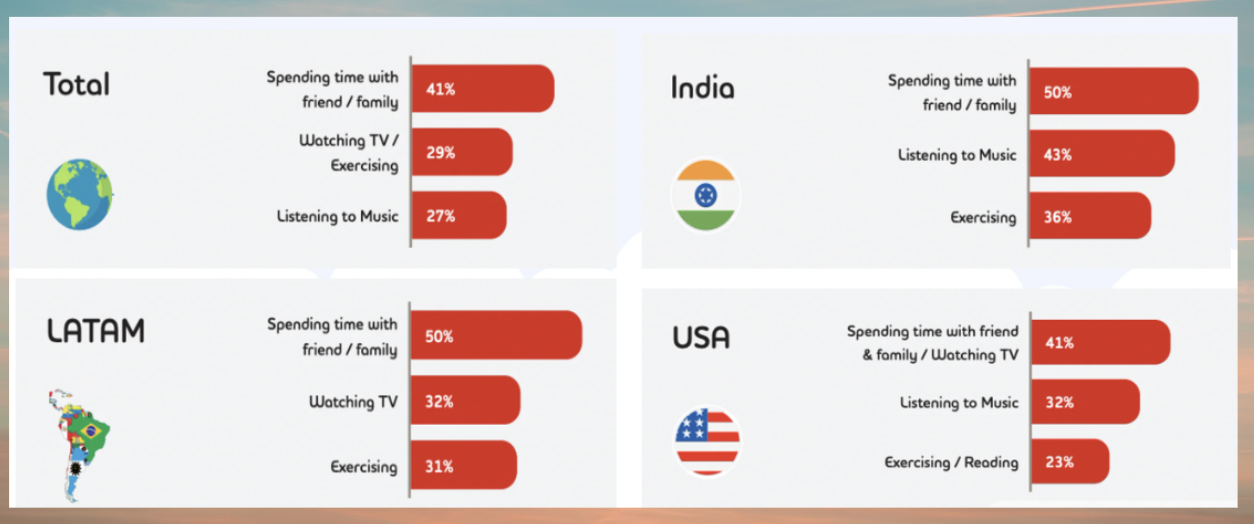
Human Resources
Journey to Wellness: 7 Practical Paths to Personal Well-being

 Elina Dokonalieva – HR Specialist
Elina Dokonalieva – HR Specialist
Introduction
In today's fast-paced and constantly changing world, it's easy to get caught up in the hustle and bustle of everyday life. However, prioritizing our individual well-being has become more crucial than ever before. Well-being encompasses not only our physical health but also our emotional, mental, and spiritual states, as well as fulfillment in our lives.
To truly achieve well-being, we need to feel happy, healthy, socially connected, and purposeful most of the time. Tchiki Davis, MA, Ph.D., at Berkeley's Institute, provides a straightforward yet powerful definition of well-being that perfectly encapsulates these essential components.
But how do we measure our own well-being levels? And how do we know if we have stable well-being? These are important questions that require practical strategies to cultivate a flourishing life.
By regularly assessing different areas of our lives, such as our physical and mental health, relationships with loved ones, and engagement in meaningful activities, we can gain insight into our overall well-being levels. It's important to make adjustments when needed, setting goals and actively working towards improvement.
Ultimately, prioritizing our individual well-being is essential for living a fulfilling and balanced life. By implementing these practical strategies, we can cultivate a state of well-being that positively impacts all aspects of our lives.
How to measure your well-being?

Measuring your well-being is an essential step towards living a fulfilling and balanced life. One effective tool for doing so is the Wheel of Life, which can help you identify areas that require improvement or attention in various aspects of your life. It typically consists of a circle divided into sections, each representing a different aspect of life, such as career, relationships, health, finance, personal development, and more. You rate your level of satisfaction or success in each area by marking a point on the corresponding section of the wheel.
However, it's important to remember that well-being is subjective and varies from person to person based on their unique needs, values, experiences, and circumstances. So, it's crucial to listen to yourself and recognize early signs of poor well-being to prevent emotional burnout or expressed imbalance.
For example, according to Gallup's Global Workplace 2022 Report, employees experience daily negative emotions like worry, stress, anger, and sadness. If you frequently experience these emotions, it's time to take notice and prioritize your well-being.

Some common signs of poor well-being at work include low productivity despite long hours, increased absenteeism, difficulty focusing, irritability, or lack of satisfaction. In personal life, poor sleep or eating habits, neglecting self-care activities, persistent feelings of unhappiness, frequent headaches, or difficulty managing emotions can be indicators of poor well-being.
If you recognize any of these signs, taking care of yourself is the first step towards improving your well-being. By paying attention to these warning signs and making positive changes, you can begin your journey towards a healthier and more fulfilling life.
What are the steps to improve your personal well-being?
Improving personal well-being is essential for leading a fulfilling and healthy life. To help you achieve this, we've compiled seven steps that can make a significant difference in your overall well-being:
- Taking time off is critical to maintain a healthy work-life balance and to recharge your batteries. Planning your vacations and days off in advance can help ensure that you take the time you need.
At Scalio, we understand the importance of taking time off, which is why our time-off policy provides 30 days of paid vacation in a year and five days of sick leave. We also encourage our team to plan their vacation days well in advance.
We have found that when you do not plan your vacations and days off, it becomes less likely that you will use them. By planning ahead, you can ensure that you have the time you need to rest, relax, and come back to work more energized and focused. - Don’t work when you’re sick. When you're feeling unwell, your body needs time to rest and recover. Working while you're unwell can prolong the healing process and potentially worsen your condition.
- Don’t work when you are on vacation. Dedicate quality time for personal life - vacations offer dedicated time to focus on your personal life, fostering stronger relationships with loved ones and creating cherished memories.
- Addressing concerns with your manager is an important step in fostering a culture of open communication and transparency. At Scalio, we believe in promoting this by implementing an Open Door Policy as one of the best practices of our flat culture structure. Our leaders keep their "office doors" open, making it easy for team members to reach out to them with any concerns or feedback they may have. This approach encourages accessibility and transparency between employees and supervisors or leaders, creating a more positive work environment where everyone feels heard and valued.
- Participating in health activities provided by your employer is an excellent way to prioritize your well-being while at work. At Scalio, we have a traditional annual health challenge designed to help our team take small steps toward a healthier lifestyle while building habits that will stick.
The Health Challenge consists of three weeks of various activities chosen by the team, such as drinking eight glasses of water, walking more steps, or focusing on getting healthier sleep. By participating in these activities, our team members can improve their physical and mental health, reduce stress levels, and increase overall well-being.
Moreover, participating in this challenge also fosters a sense of community and camaraderie among team members. It allows us to support and encourage each other, creating a positive and supportive workplace culture. - Unplugging from work while at home is essential for maintaining a healthy work-life balance and promoting overall well-being. It allows your brain time to re-energize, recharge, and ultimately do your best work.
To achieve this, it's important to set clear boundaries between work and personal life. Define specific work hours and commit to sticking to them, avoiding checking work emails or engaging in work-related tasks outside of these designated hours. By doing so, you can establish a clear separation between work and personal life, allowing yourself the time and space to focus on non-work-related activities that are important to your overall well-being. - Recharging with physical activity is the last but not least step in improving well-being. At Adecco, an interesting report shows how workers prefer to disconnect from work, and physical activity is one of the most popular ways.

Physical exercise has numerous benefits for both physical and mental health. Studies show that physically active individuals are more inventive and creative than those with a more sedentary lifestyle. Exercise also reduces the number of days per month a person experiences poor mental health by more than 43%. Furthermore, regular aerobic exercise helps people fall asleep quicker, sleep better, and wake up less during the night, contributing to better overall health and well-being.
So, prioritize engaging in physical activity as part of your daily routine. By doing so, you'll not only improve your physical health but also boost creativity, reduce stress levels, and improve mental health. Remember, taking care of yourself is vital to leading a fulfilling and healthy life!
How often should you work out to gain the benefits of exercise?
"Exercise is the magic pill." - Dr. Michael Joyner ”The only bad workout is the one that didn't happen. - Unknown "Physical fitness is not only one of the most important keys to a healthy body, but it is also the basis of dynamic and creative intellectual activity." - John F. Kennedy
Regular physical activity is essential for maintaining good health, but the amount of exercise needed varies based on how much sitting we do. While it's generally recommended that people engage in at least 30 minutes of exercise each day, recent research shows that this may not be enough to counteract the negative health effects of prolonged sitting.
To achieve optimal health benefits, it's recommended to create a "cocktail" of activities that you enjoy. This might include 30 minutes of exercise plus six hours of light activities such as housework, yard work, or playing with kids. By engaging in a variety of activities that you enjoy, you're more likely to stay committed and motivated to maintain an active lifestyle over the long term.
You can go to the gym, dance, stretch, or choose any other activity that you enjoy the most. It will guarantee you sustainable engagement: when you engage in physical activities that you genuinely enjoy, you are more likely to stick with them over the long term. Consistency is key to reaping the benefits of physical activity. Many studies prove that focusing on daily goals is more important than on weekly ones. When you find joy and satisfaction in what you're doing, it becomes easier to stay committed and motivated.
Recognizing signs, listening to your feelings, monitoring your well-being pulse, starting actions toward feeling better - all these factors of how clearly you see and understand yourself.
Harvard Business Review article stated that:
“Research suggests that when we see ourselves clearly, we are more confident and more creative. We make sounder decisions, build stronger relationships, and communicate more effectively. We’re less likely to lie, cheat, and steal. We are better workers who get more promotions. And we’re more-effective leaders with more-satisfied employees and more-profitable companies.”
Conclusion
In conclusion, prioritizing individual well-being is essential for leading a fulfilling and balanced life. We have learned that individual well-being is subjective and unique to each person. It requires attention to various aspects, including work, personal life, relationships, and self-care. By recognizing the signs of poor well-being, both in the workplace and in personal life, we can proactively address these issues and make positive changes. Implementing helpful practices, such as self-care routines, setting boundaries, practicing mindfulness, seeking social support, and engaging in activities we enjoy, can significantly contribute to our overall well-being.
Ultimately, prioritizing individual well-being is not only beneficial for ourselves but also for those around us. When we take care of ourselves, we are better equipped to show up as our best selves in our work, relationships, and communities. It is a continuous journey that requires self-awareness, intentional choices, and a commitment to self-care.
Remember, individual well-being is an ongoing journey that requires self-care, self-reflection, and a commitment to living our lives authentically. Embrace the steps that resonate with you, and may your pursuit of well-being bring you a life filled with joy, contentment, and fulfillment.



